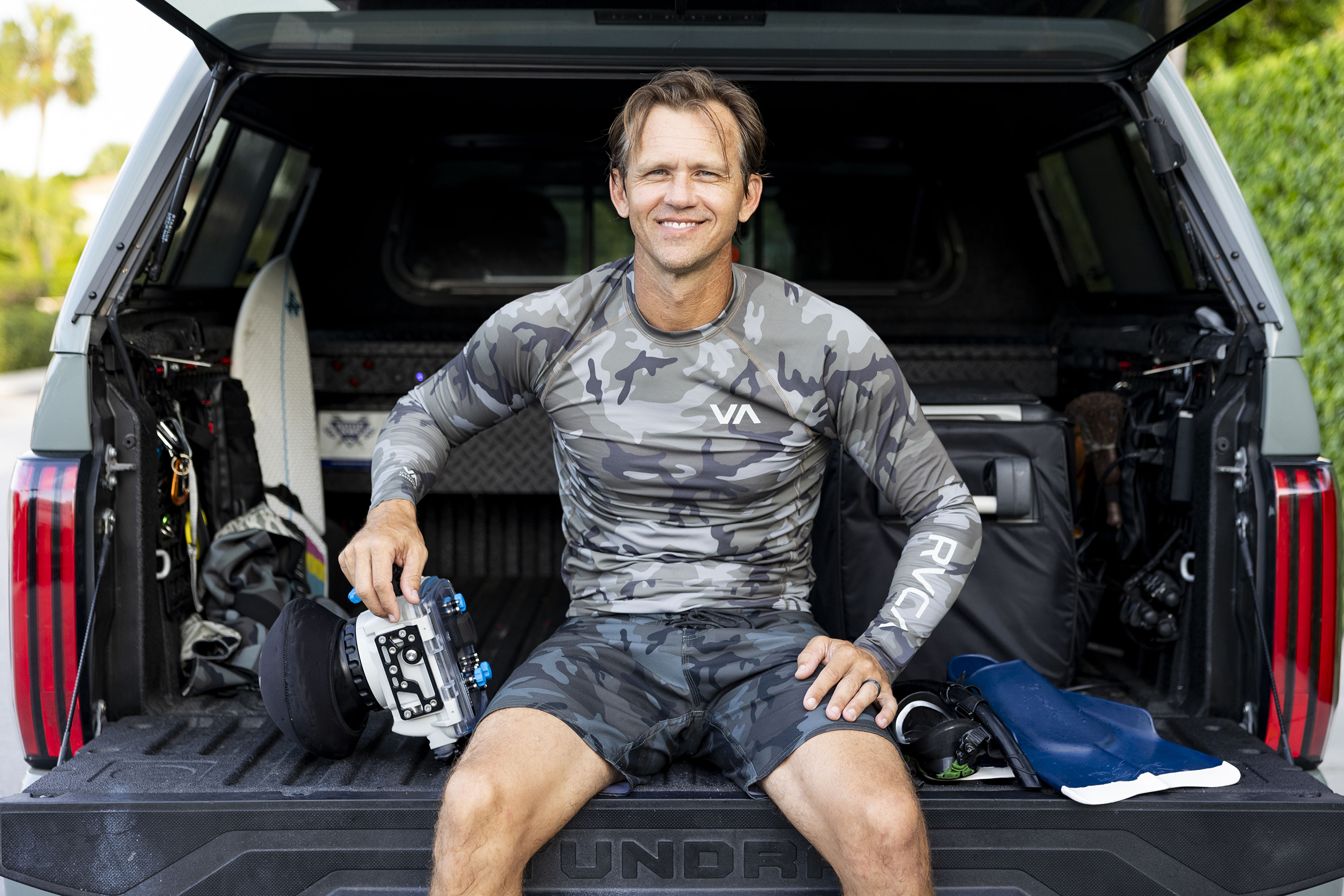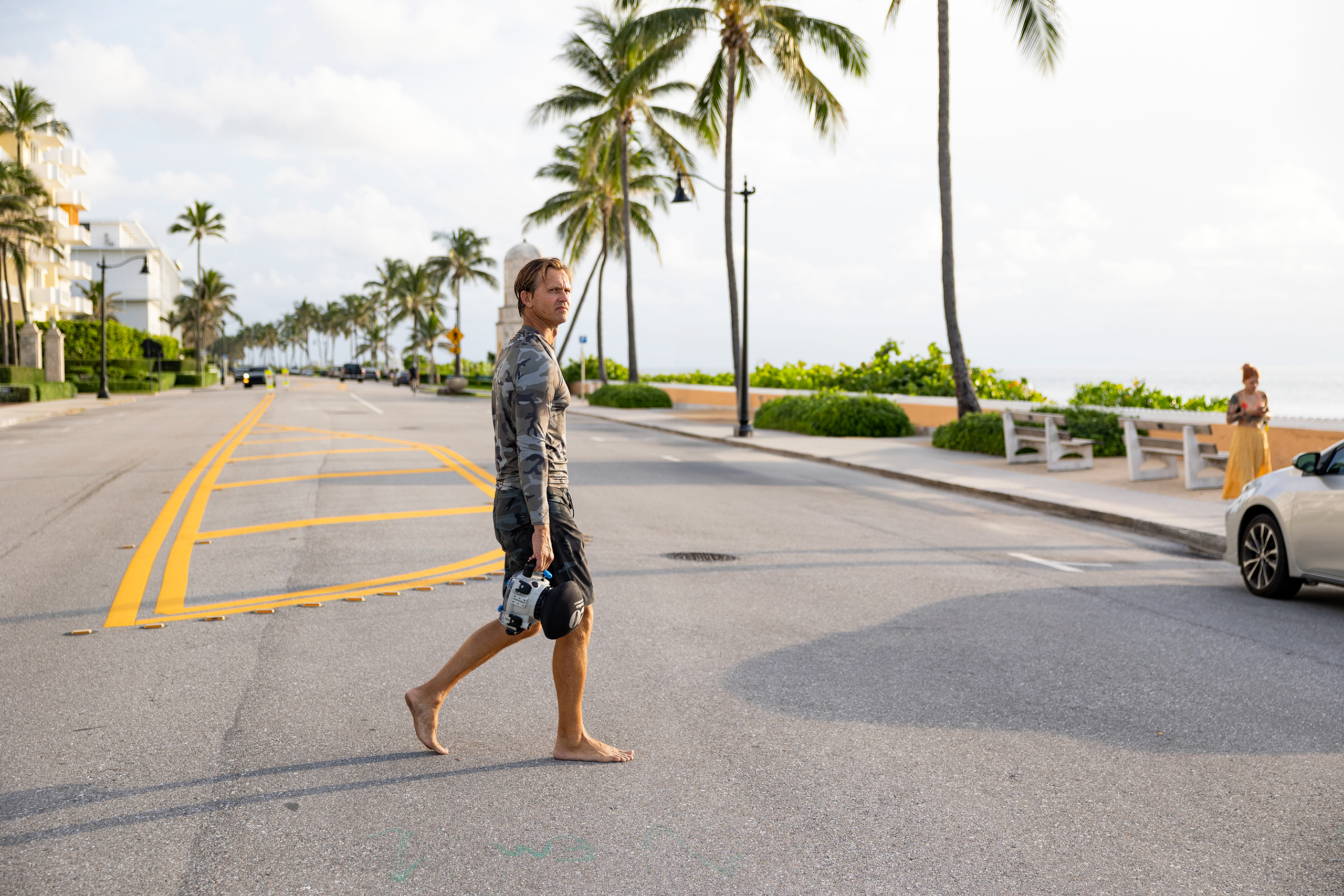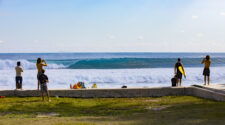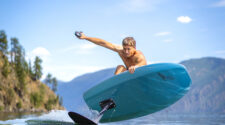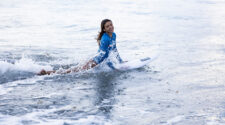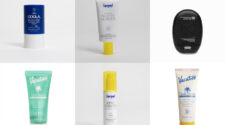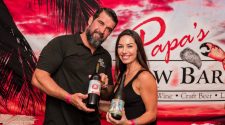Meet Ben Hicks, an Emmy Award-winning local photographer, most commonly known for a unique subject – baby sea turtles. His work showcases the intricate beauty of these creatures while also supporting conservation efforts through awareness and donations of images. But, capturing these images is no simple task. It involves early mornings, patience, and a deep understanding of the sea turtle’s environment.
Follow along to experience a day (or morning, rather) in the life of Ben Hicks.
Preparations
4:30 AM – Wake Up
“Typical day during the season, I try to get on the beach as early as I can see. That changes every single day, but if the sun rises at 6:30 a.m. I get up around 5 a.m., get to the beach around 5:30 a.m. if I’m going somewhere close. If I have to go to Palm Beach like I did today, I’ll have to wake up earlier. Most of my gear is ready. I have two bags. One backpack with the housing that currently has an r5 and a 24mm prime with a large dome port, also has fins, a mask, and a snorkel. The other backpack has an r3, 70-200, an 11-35 and extra batteries for both cameras. That’s about it. I don’t carry water, no shoes, typically no shirt. I often carry a hat with flaps on the side and maybe a buff for sun protection.”
“Once I get to the beach, I’ll start walking. Usually it’s around two miles, which can be a lot with all of my gear. Sometimes I’ll stop three or four times to swim out, so it really drags out. I’m pretty exhausted after three to four hours of doing that.”
6:00 AM – The Search Begins
“Sometimes I have tips on where the biologists will be. Other times I’m just walking on the beach to look for any signs of life. Which I don’t always like to promote, because sometimes people will go out looking and touch or interfere with hatchlings. A lot of times early in the season I’ll walk and see nothing. Which is actually pretty often. And that’s with all of the tips and experience I’ve had over the years. The beaches that I’m on, I am under that beach’s sea turtle monitoring permit. That’s also how I’m able to sell my footage.
Today, it probably took me about 30 minutes walking on the beach before I met up with a biologist. I usually communicate in advance and find out if they are excavating any nests and if they have seen any mothers. Today, the biologist excavated three nests and there were two hatchlings left.”
The Opportunity
6:30 AM
“I shot one [turtle] on its way down and then grabbed my underwater housing. In that time, I lost it in the shore break – even after getting into the water with it. The second one I was able to capture in the water. But even after all that, I wasn’t really happy with the visibility. The big sargassum movement of seaweed is not good for what I do. It’s broken up into tiny little particles and reduces clarity. Also the rainy season reduces quality.
Let’s say I shoot 20,000 images over 30 days. I’ll usually get 10 images out of that. But, there could be a day when all of the elements come together and I could get 10 images in one shoot. But that doesn’t happen very often.”
Reflecting
7:15 AM
“I’ll always donate the images to the people I’m working with. In my mind, I’m successful if I have the opportunity to shoot. In my mind, success is finding a hatchling.
One of the more difficult parts is that I’m swimming sideways next to the turtle to make sure I give them complete leeway. It would be much easier to get in front of the turtle to shoot. Swimming alongside sideways, making sure my camera is in focus and all of that reduces the chance of being successful.”
The Walk Back
7:30 AM
“Between now and 9 a.m. I’m out of the water and walking back to my truck. But I won’t stop there, I’ll just change modes. A lot of times I’ll go get my drone to fly and look around. Because I’m already there with all my gear, I might as well see what I can find.”
Post-Processing
9:00 AM
“Often times I’m back at the studio to review the images by this time. I don’t do a lot of post processing. Sometimes I’ll need to add a little warmth because you lose a lot of the reds in the water. A lot of times hatchlings are swimming at the surface, so you really don’t need to correct a lot.”
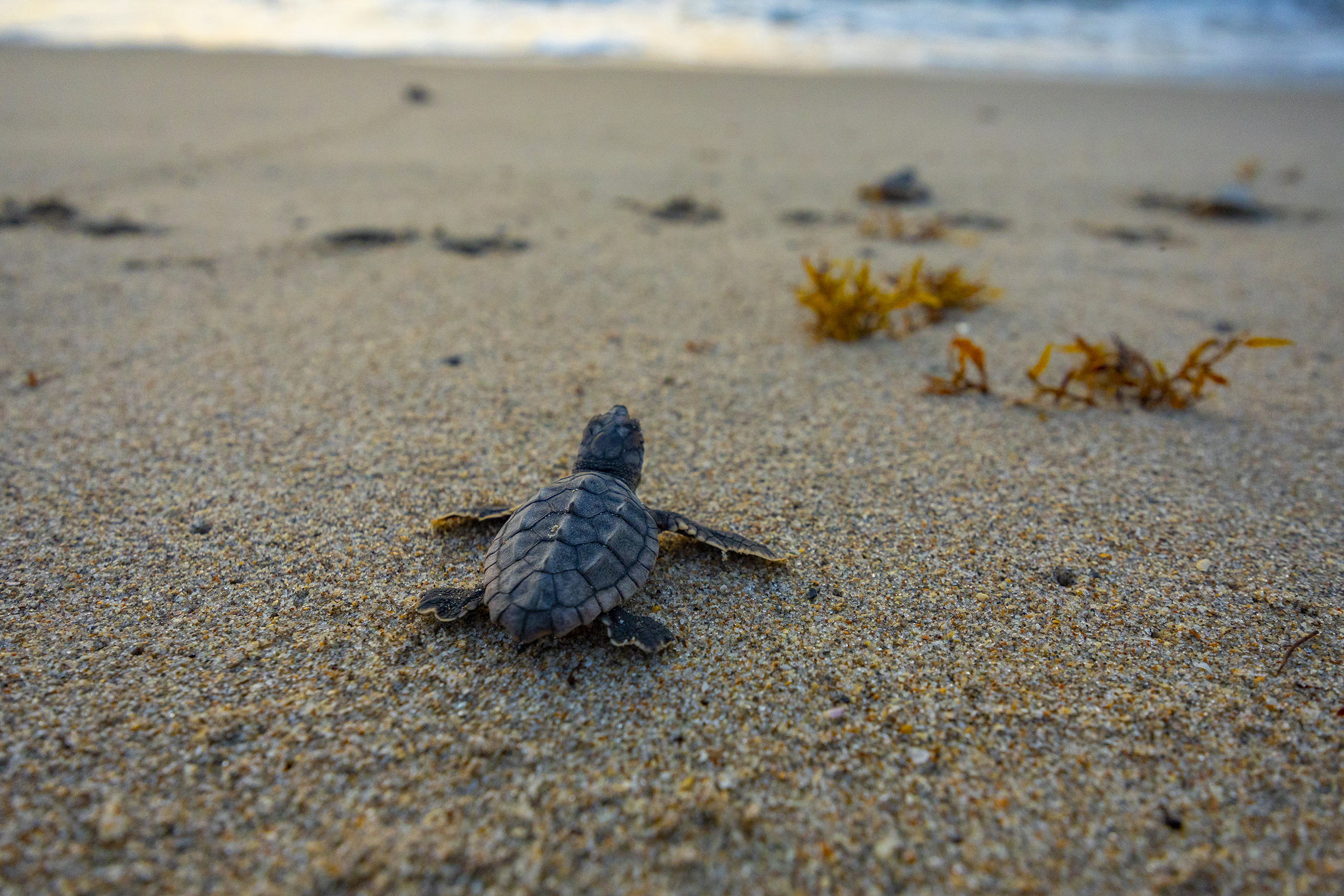
A Day in the Life
A day in the life of Ben Hicks reveals the passion, commitment and respect needed to capture these unique moments in nature. The images are the platform he uses to spread awareness and contribute resources to sea turtles’ fragile existence in today’s world. This shoot was just a glimpse into the hours and effort that go into a single image.
